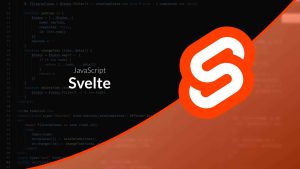When It comes to day to day tasks inside large corporation we often underestimate the small beans. Corporation losing lots of money on repeated tasks, which can be easily automated. Especially office-related tasks like email, meetings, social media posting, excel work, various accounting and finance work, logistic support.
Maximum time these jobs are repeated and need human focus just the case of error. According to research which was conducted inside the USA within 500 employees from various corporations. The average employee spent 1.5 days/week on reading and writing emails, for meetings it goes up high to 2 days. But the more scariest part is large portion employees did not track the time spent on email and meetings.

Also, the impact is higher in the marketing/SMM team, creating content can take lots of time, but posting the content into the correct format on different web platforms is time-consuming and non-productive.
The fears lead to fragile culture. People used to take automation as a scary science fiction movie. AI is taking jobs, automation is cutting jobs, Terminator 3 is happening all around….. thanks to mouthful coverage on media and put wrong seed on our brain.

Also nonhelpful over a dominated office culture is one other way to push an employee not to think outside of the box, doing a regular task at a specified time. Especially this problem is heavy on nontechnical employees. Without culture growth, it is impossible to obtain human growth and process growth.
Back to the velvet ground of automation, currently in the market, there are some really great tools available for automating day to day boring jobs and we can use them as a time-saving machines. I will write sequential articles on them and their sample used cases. But for today, let focus on most easy to use, need zero coding skills and highly productive toolset.
My first choice for nontechnical automation is task flow tools.
3 of them are the most popular and have the biggest list of connection/API integration available.
Microsoft Flow:
I put Microsoft flow on first because of its vast features and easy connectivity options. On Microsoft official website they have 200+ connectors and 100+ templates from the different use cases. From sending automate an email to saving Gmail attachment into the local drive, MSFlow provides tons of featured connections with or without third-party software integration. I have used flow for various complex used cases. Even connecting with the SQL server is seems an easy task. But the main reason I put the flow on top because of their custom connector creation capability, that means a user can connect any kind of data connection with the help of JSON(Javascript object notation), it is a data structure defined the system, which is most popular in the web development industry.

If you want to learn more about JSON I recommend taking a look on MDN docs:
https://developer.mozilla.org/en-US/docs/Learn/JavaScript/Objects/JSON
From software developer point this is bread and butter, also it can be a cup of coffee when if MSFlow support custom API data transaction.
Zapier
The second place goes to Zapier. This tool is more popular among the non-official clients. They have more connector and third-party integration then Microsoft flow. If your goal is using it for social media or other non-Microsoft platforms I recommend using zapier. I am a little discouraged to use it because of their crucial pricing, and trying to put the price into each task/run which is big no if you have lots of tasks. But there is also a free plan to test it before going for plan.
IFTT
Last but not least IFTT. They have an open-source mentality and have quit lots of connectors and templates. I like their UX design and the way they implement software also IoT integration is a huge forward step, but not really happy about some of the major connectors. Especially when I was trying to connect WP service and google sheet they did not support lots of necessary features like Zapier/MsFlow.
Now it depends on user tests and uses case, there is no correct or wrong solution, each of them has their pros and cons. following chart indexing the main information.








